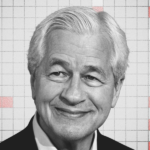Jerome Powell calmed the fraying nerves of investors yesterday as he set a more dovish tone than expected on monetary policy and the easing of interest rates. However, the relief for Wall Street may prove to be shortlived, as President Trump reignited tensions with China over soy beans.
At a meeting of the National Association for Business Economics, in Philadelphia, yesterday afternoon the Fed chairman said that in the absence of government data, federal reserve bank and private data is being used to monitor the economy. The result is a familiar one—the outlook for both inflation and employment is relatively unchanged compared to when the Federal Open Market Committee (FOMC) met last month.
In the second half of the year, fear has been rising that two parts of the Fed’s mandate—inflation at 2% and stable employment—may be in tension with one another, with inflation demanding higher rates to cool the economy and bring down price rises, while slowing jobs growth would require lower rates in order to foster economic activity.
He added that while official data from the Bureau of Labor Statistics is delayed given the government shutdown “available evidence suggests that both layoffs and hiring remain low, and that both households’ perceptions of job availability and firms’ perceptions of hiring difficulty continue their downward trajectories.”
And even while Powell—the subject of the president’s ire this year for not cutting rates as soon as he would have liked—reiterated that inflation in the near-term remains sticky at near 3%, he did caveat that “most longer-term expectation measures remain aligned with our 2% goal.” Analysts may have particularly liked this because it suggests that Powell is willing to “look through” tariff-related inflation, which is expected to hit in the coming months, but discount it from the trajectory of monetary policy as a one-off hit to prices.
While the chairman added that “we will set policy based on the evolution of the economic outlook and the balance of risks, rather than following a predetermined path,” investors heard enough of what they wanted to remain bullish on further cuts—reason to celebrate as lower rates mean cheaper borrowing for businesses and consumers. According to CME’s FedWatch barometer, the likelihood of a 25bps cut in the Fed’s October meeting is now at nearly 96%, up from 94% a week ago.
But the confidence didn’t last for long. Deutsche Bank’s Jim Reid noted to clients this morning: “It’s certainly been quite a ride in markets since Friday’s trade escalation with many sentiment shifts in the subsequent two to three days. The last 24 hours has been a microcosm of that with the S&P 500 (-0.16%) only slightly lower after rallying hard from lows of around -1.5% just after the open and then bouncing off the highs of around +0.4% a couple of hours before the New York close. The rally back was caused by dovish comments from Fed Chair Powell after Europe went home, but a late social media post from President Trump reignited some fears of US-China escalations.”
But perhaps the most notable shift was the VIX volatility index, which spiked 3% late yesterday. Investors’ expectations of increased volatility likely came (as is becoming a trend) in the form of President Trump’s social media.
Talk of retribution is precisely the opposite of what markets had hoped for, and is a further about-turn from the White House on relations with Beijing. On Friday, Trump threatened 100% tariffs on its key trading partner, before issuing assurances that a deal will be reached. It comes as the latest export data for China shows Washington may not have as strong a hand as it believed in the trade war, with Chinese exporters reporting growth having focussed on trade with the rest of the world as opposed to the States.
Here’s a snapshot of the markets this morning:









